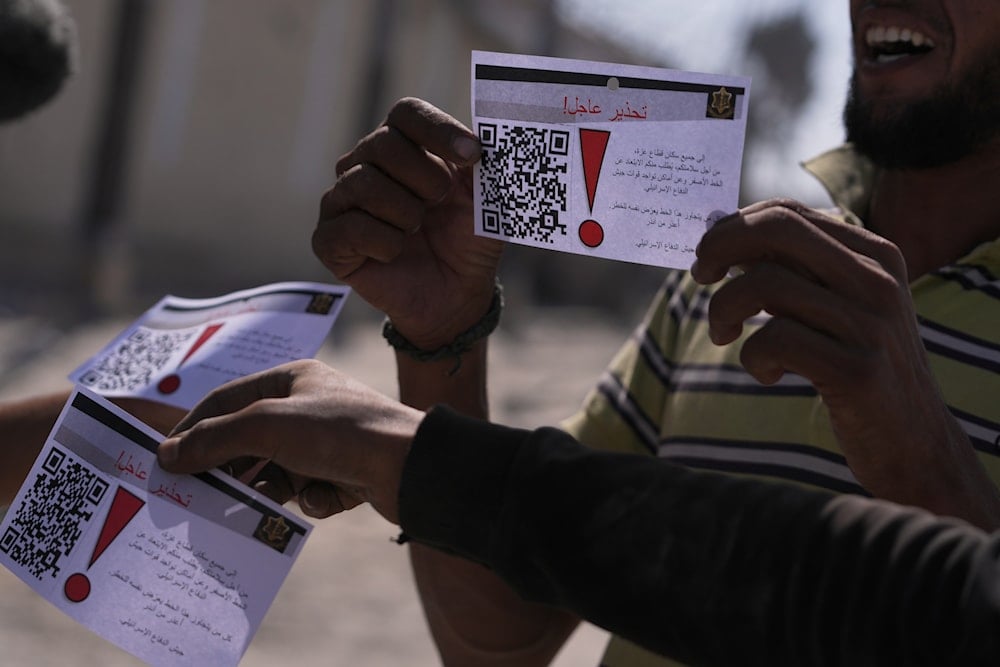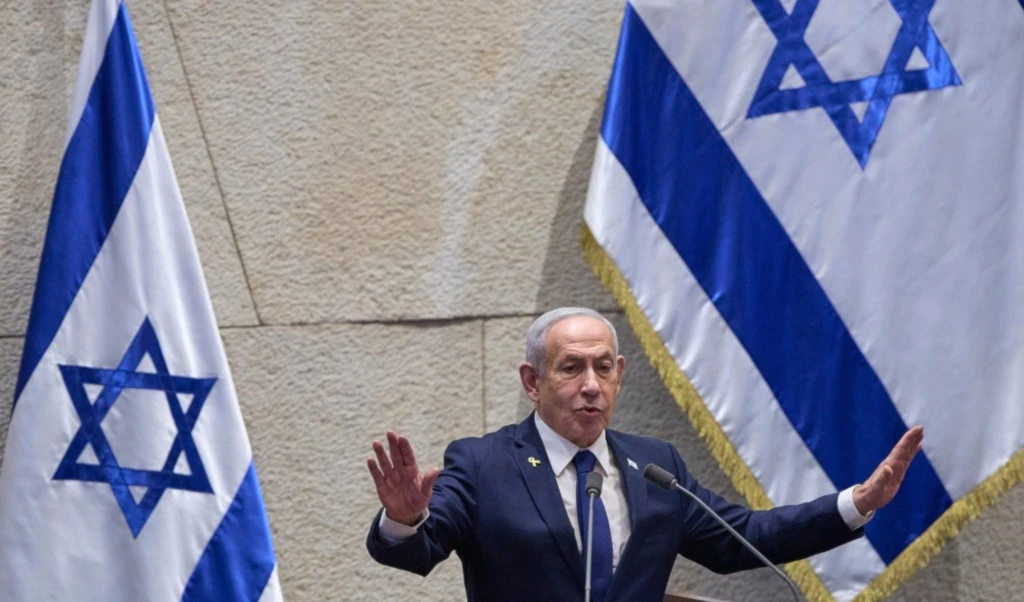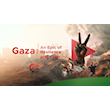'Israel' fortifies Gaza’s 'yellow line,' prepares to dig in: WSJ
WSJ reports the IOF is fortifying Gaza’s "yellow line" with outposts and infrastructure, raising concerns the ceasefire demarcation may become permanent.
-

Palestinians show to the camera leaflets dropped by an Israeli drone warning people to stay away from the so-called yellow line in Khan Younis, in the southern Gaza Strip, October 20, 2025. (AP)
The Israeli military command has given orders to physically fortify and formally mark the ceasefire “yellow line” inside the Gaza Strip, erecting outposts, two-storey sand berms, barbed wire and yellow concrete markers while deploying drones and armoured units in the area, The Wall Street Journal (WSJ) reported.
According to on-the-ground reporting by WSJ, these messures risk converting a temporary truce demarcation into a durable, Israeli-occupied zone that further divides the territory.
Key facts from the WSJ visit
The Wall Street Journal visited an Israeli outpost on high ground overlooking the destroyed neighborhood of Shujaiyah, east of Gaza City, and described a two-storey berm topped with barbed wire, a sandy two-car road running beneath a shorter berm, and drones buzzing overhead.
The occupation's military is reported to be laying yellow-painted concrete blocks along the demarcation, and military officials told the paper that only about 10 to 20 percent of that marking work is complete. The line, created under the recent US-brokered arrangement, is being manned with existing outposts and newly erected positions, with troops and tanks arrayed behind sand berms.
A senior Israeli military official cited by the WSJ said the yellow line roughly splits Gaza in two and that hundreds of Palestinians are now living on the Israeli-occupied side. A previous report by the WSJ had highlighted how the plan to split Gaza into two and rebuild the areas behind the so-called yellow line had been suggested by US special envoy Jared Kushner and US Vice President JD Vance.
As one Israeli security advisor told the paper, the demarcation offers "Israel" a practical option to reshape control on the ground, a measure that Arab mediators have rejected.
“Arab governments strongly oppose the idea of dividing Gaza, arguing it could lead to a zone of permanent Israeli control inside the enclave,” a report published on October 22 explained.
“They are unlikely to commit troops to police the enclave on those terms,” the newspaper added, in reference to an international force that would oversee the implementation of the ceasefire agreement in Gaza and related processes at a later stage of the ceasefire agreement.
What is the 'yellow line' in Gaza?
Under the text of the plan that underpins the ceasefire, the yellow line is meant to function as an interim security demarcation tied to two conditions: the deployment of an international stabilization/security force and the disarmament of the Palestinian Resistance.
Once those conditions are met, "Israel" is formally expected to withdraw further toward Gaza’s borders in a phased manner. In practice, however, the agreement links withdrawal to subsequent verification steps rather than creating an automatic or unconditional pullback. That ambiguity leaves the timing and scope of any Israeli withdrawal contingent on political and security developments.
Moreover, Hamas and Palestinian Resistance parties have rejected disarmament, maintaining that they only agreed to exchange deals and cessation of hostilities. Hamas and other groups have stressed that matters such as governance and security are Palestinian issues that should be discussed internally.
Read more: Arab League chief exposes secret US deal shielding 'Israel’s' nukes
Security dynamics and ceasefire incidents
The WSJ report also details Israeli plans to construct new water and electricity infrastructure and to site aid hubs on its side of the yellow line, part of a US-backed proposal to begin rebuilding Gaza only in areas under Israeli control if the Resistance refuses to disarm.
Practically, that approach would create competing governance and service zones inside Gaza: one area where reconstruction, utilities and humanitarian access are channelled through Israeli-controlled corridors, and another left under local adminstration, suffering from an Israeli siege and near-completely obliterated infrastructure.
For civilians, this could mean internal partitioning of Gaza, constrained movement across an Israeli-imposed boundary, and unequal access to reconstruction and basic services. Unless the promised international force, technocratic government, rebuilding process, and phased withdrawal proceed promptly and transparently, the yellow line risks morphing from a temporary ceasefire mark into a persistent line of Israeli control, one that sould reshape what remains of internationally recognized Palestinian geography and the political rights of its people.

 4 Min Read
4 Min Read











